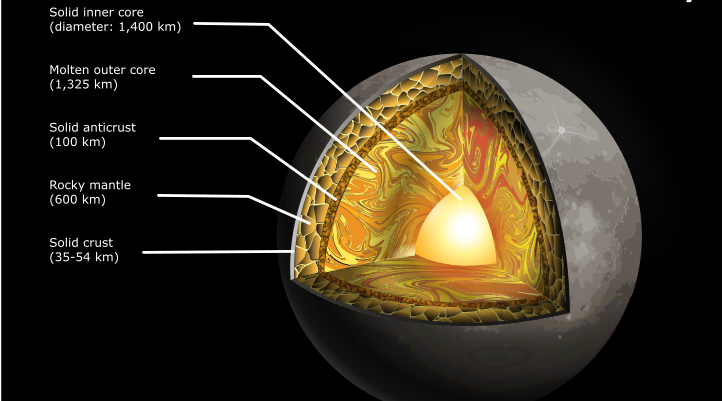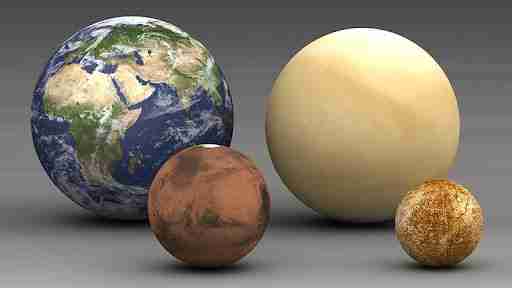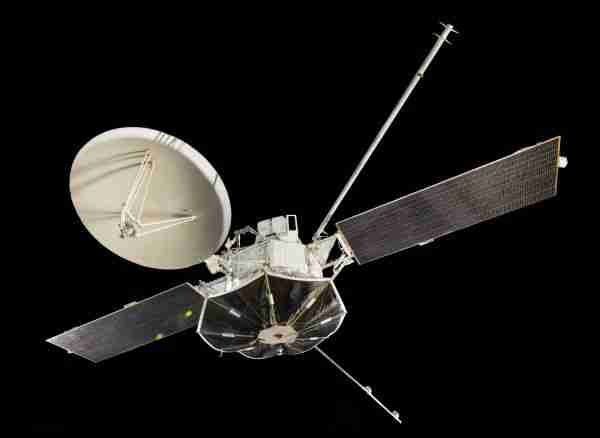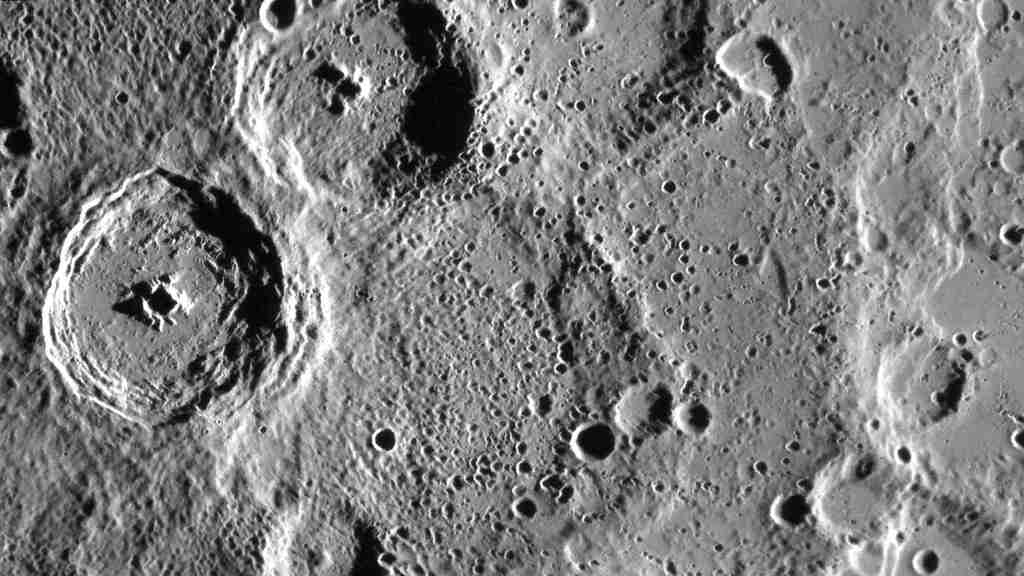22 Fun Facts About Mercury | Celestial Wonders
1. Mercury is the fastest planet in the Solar System.
Planer Mercury, the first planet of our solar system, named after the god of speed, truly lives up to its name as the solar system’s swiftest planet.
It completes an orbit around the Sun in just 88 days, racing through space at an impressive speed of 29 miles per second, which equals about 107.7 thousand miles per hour. Thus, it is also called the Swift Planet.
2. Mercury experiences double sunrises and sunsets.
One of the most unique and interesting facts about Mercury is its phenomenon of double sunrises and sunsets. As the Sun appears twice as large in the sky compared to Earth, Mercury treats its observers to a rare sight.
Its slow rotation, combined with a speedy elliptical orbit, means the Sun can rise, backtrack, and rise again within a single day. This extraordinary event reverses at sunset, offering a captivating display unlike any other planet.
3. Mercury has no seasons.
Mercury doesn’t have seasons like we do on Earth. This is because unlike the most of other planets. its axis is almost straight up and down, tilted by only 2 degrees.
Other planets tilt as they orbit the Sun, causing seasons to change, however, Mercury’s minimal tilt keeps its climate steady all year round, without any noticeable changes.
4. A year on Mercury is just 88 Earth days.
Mercury, the planet nearest to the Sun, completes its orbit in just 88 Earth days, marking a year on Mercury. This swift orbit results from its proximity to the Sun and the smallest orbital radius among the solar system’s planets.
Interestingly, despite its slow rotation, which leads to long days, Mercury’s fast orbital speed ensures a short year.
5. Despite being closest to the Sun, Mercury is not the hottest planet.
Another lesser-known fact about Mercury is that it doesn’t claim the title of the hottest planet in our solar system, despite being the first and closest planet to the Sun.
This honor goes to Venus, whose dense atmosphere traps heat more efficiently. Mercury’s thin atmosphere simply can’t hold onto the Sun’s warmth in the same way, making Venus significantly warmer.
6. When Mercury was discovered?
Mercury’s presence has been acknowledged since ancient times, with its first recorded observation dating back to the 14th century BC by Assyrian astronomers. This early sighting was noted in the Mui Apin tablets.
Additionally, the Sumerians, around 3,000 BC, are among the earliest cultures to have documented Mercury, highlighting its long-standing recognition across various civilizations throughout history.
7. Mercury is the smallest planet in the Solar System.
Mercury holds the title of the smallest planet in our Solar System, both in mass and volume, with a diameter of 4,879 km and a mass of 3.3010 x 10^23 kg.
Its size is more comparable to our Moon than to Earth, having the smallest circumference of about 9,500 miles, significantly less than Mars, the second smallest planet.
8. Mercury is quite dense, with a large iron core.

Mercury’s remarkable density stems from its iron-rich core, constituting about 60% of its volume, hinting at a tumultuous past possibly involving a massive collision that removed much of its mantle.
Various theories, including the Giant Impact Hypothesis and solar influences, attempt to explain this density. A 2021 study suggests the Sun’s magnetic field may have also played a role in enhancing Mercury’s core density and iron content.
9. Mercury’s magnetic field is about 1% the strength of Earth’s.
Discovered in 1974, Mercury’s magnetic field is intriguingly about 1.1% the strength of Earth’s, making it significantly weaker yet capable of deflecting the solar wind and forming a magnetosphere.
This field, resembling a magnetic dipole, is weaker even than Jupiter’s moon Ganymede’s, attributed to Mercury’s core cooling and solidifying more rapidly than Earth’s.
10. Mercury’s orbit is highly eccentric.
Mercury boasts the most eccentric orbit among all planets, with an eccentricity of 0.2, making it significantly non-circular. This unique orbit is also inclined at 7 degrees relative to Earth and 6.35 degrees to the invariable plane, far surpassing the inclination of any other planet.
Eccentricity measures the orbit’s roundness, with Mercury’s path being the most ‘squished’ or elongated in our solar system.
11. Mercury’s poles have ice deposits.
Another interesting fact about Mercury is its unexpected ice deposits at the poles, despite daytime temperatures reaching 400 degrees Celsius. Recent studies reveal abundant ice across its north pole, within craters and shadowed regions.
This ice persists in permanently shadowed craters, shielded from the sun’s intense heat, a surprising find given Mercury’s lack of a protective atmosphere like Earth’s.
12. Mercury is classified as a Terrestrial Planet.

Mercury, along with Venus, Earth, and Mars, is classified as a terrestrial planet due to its solid, rocky surface. It stands as the smallest among them, approximately a third the size of Earth.
Mercury’s surface, marked by numerous craters from countless impacts over billions of years, shares a similar surface gravity with Mars, underscoring its rocky, terrestrial nature
13. Mercury has no rings.
Mercury doesn’t have any rings. Its small size and closeness to the Sun mean it’s unlikely to ever hold onto a ring system. The intense solar winds from the Sun would scatter any materials that could form rings.
Similarly, the strong gravitational pull from the Sun also plays a part in preventing Mercury from having rings, just like the other rocky planets: Venus, Earth, and Mars.
14. Mercury is wrinkled due to the cooling of its iron core.
Mercury’s surface is marked by wrinkle-like features, evidence of the planet shrinking over billions of years. This phenomenon occurs as Mercury’s liquid iron core cools and solidifies, reducing its volume.
Published findings in Nature Geoscience highlight this process, offering insights into Mercury’s thermal, tectonic, and volcanic history, and showcasing the planet’s unique evolution without Earth-like plate tectonics.
15. Mercury has over 400 named craters.
Mercury is home to approximately 414 named craters, with the colossal Caloris Basin as a standout, measuring 950 miles across and encircled by towering mountains. Discovered in the 1970s, this giant impact crater highlights Mercury’s unique geological history.
Unlike gas giants like Jupiter, Saturn, and Neptune, Mercury’s lack of atmosphere ensures its craters, including Caloris, remain remarkably preserved without erosion.
16. Has anyone landed on Mercury?

No spacecraft has soft-landed on Mercury; however, NASA’s MESSENGER probe crashed into its surface in 2015 after orbiting for four years. No human has orbited Mercury.
Mercury has been explored by only two spacecraft: Mariner 10, which flew by three times in the mid-1970s, mapping half the planet, and MESSENGER, which completed a full surface map by 2013.
17. Mercury was named after the Roman messenger God.
One of the mythological Mercury facts is its naming after the Roman messenger god, symbolizing speed and mobility, due to its rapid orbit around the Sun. Mercury, a significant deity in Roman religion, embodied commerce, eloquence, and guidance of souls to the underworld.
Known for his winged sandals and hat, Mercury’s role as a swift messenger influenced the naming of the planet.
18. Mercury has a tail formed by sodium molecules.
Mercury possesses a unique comet-like tail, extending over 2.5 million kilometers, primarily composed of sodium ions. This glowing tail, often resembling a dragon’s, is formed as sodium atoms are ejected from Mercury’s surface by solar radiation and micrometeorite impacts.
Thus, creating a stream that stretches more than 100 times the planet’s radius into space, visible in the night sky during its closest approach to the Sun.
19. Why does mercury have no atmosphere?
Mercury has a very thin atmosphere, or exosphere, primarily because its low gravity struggles to retain gases, especially when subjected to the Sun’s intense heat and solar wind.
This proximity to the Sun means any potential atmosphere is quickly eroded. Consequently, without a substantial atmosphere to trap heat, Mercury experiences drastic temperature drops at night, turning extremely cold.
20. Mercury’s surface is heavily cratered, resembling the Moon’s.

Mercury’s surface, heavily cratered and resembling the Moon’s, showcases extensive plains and signs of ancient volcanism, indicating geological inactivity for billions of years.
Its craters, named after notable artists like Dr. Seuss and Alvin Ailey, reflect a history of impacts. The surface composition, similar to Earth’s komatiites and basalts but with less iron, hints at its dense, iron-rich core.
21. Mercury has inactive volcanoes.
Another interesting fact about Mercury is its long-dormant volcanic history. Volcanic activity on this innermost planet ceased around 3.5 billion years ago, much earlier than on other terrestrial planets like Venus, Mars, and Earth.
The last signs of volcanism are found near impact craters, suggesting Mercury’s crust was once thin or damaged, allowing lava flows that have since become ancient relics.
22. Mercury’s rotation on its axis takes 59 Earth days.
Mercury’s rotation is quite slow, taking 59 Earth days to complete one full turn on its axis. Yet, it orbits the Sun in just 88 days, making it the swiftest planet in the solar system.
This means a day on Mercury, from one sunrise to the next, lasts about 176 Earth days, making it longer than a year on Mercury.
FAQs
Mercury is primarily made of a large iron core surrounded by a silicate mantle and crust, giving it a dense, metallic composition similar to Earth’s but with a much larger core proportionally.
Despite its proximity to the Sun, Mercury isn’t the hottest planet because it lacks a thick atmosphere to trap heat, unlike Venus, which has a dense atmosphere that retains solar heat.
The distance between Mercury and Earth varies due to their orbits, ranging from approximately 77 million kilometers (48 million miles) at their closest to 222 million kilometers (138 million miles) at their farthest.
Mercury has no moons. It’s one of the two planets in our solar system, alongside Venus, that doesn’t have any natural satellites orbiting it, making its skies moonless.
In astrology, Mercury represents communication, intellect, and reasoning. It governs how we think, communicate, and understand information, influencing our logical thinking, language, and how we connect and interact with others.







